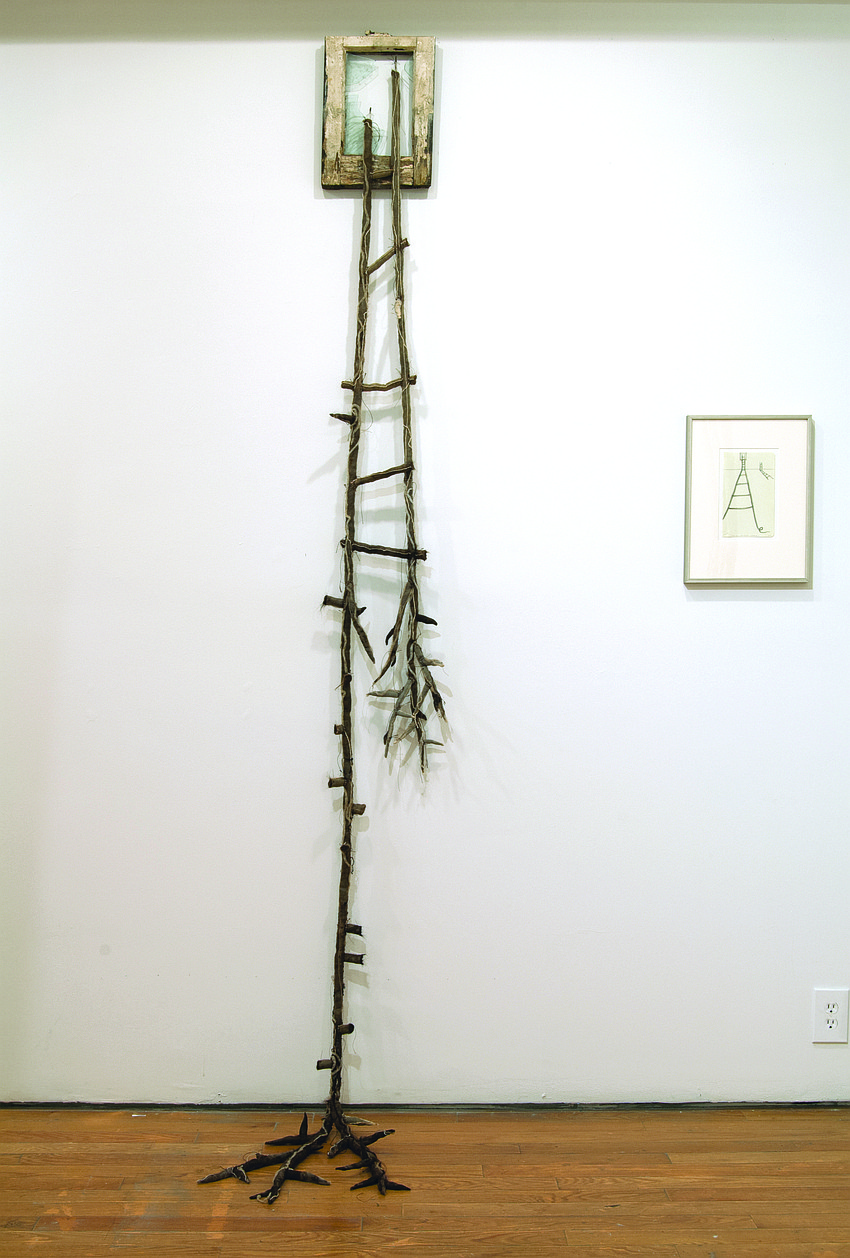- May 1, 2025
-
-
Loading

Here’s an astrology joke for you:
Q: How can you tell if someone’s a Scorpio?
A: When you ask their birthday, they tell you it’s a secret.
The joke notwithstanding, artist Babs Reingold reveals that she was born on Nov. 21. That means her birth sign is Scorpio. (We’ll ignore the fact that Reingold’s birthday is on the cusp of Sagittarius.)
A solo show called “Under My Skin” seems right for an artist born under the sign of Scorpio. Those born under this sign are known for going beneath the surface of things.
Just look at the name of Reingold’s mixed-media show at Marianne Chapel’s Spaaces gallery: “Under My Skin.”
“There’s a lot that bothers me, that gets under my skin,” Reingold says during a walkthrough of her mixed-media show.
For her interview, Reingold comes dressed in a stylish black ensemble over a plain white T -shirt accessorized with striking silver jewelry. If a casting director put out a call for a female artist of a certain age to be seen walking the streets of New York City’s SoHo or Chelsea neighborhoods, Reingold would get the part.
Don’t ask her to smile when you take her portrait. “I’m not much for smiling,” Reingold says.
When you’re an artist, you’re used to having complete control over what’s in the frame or in the studio. And the need to control one’s environment is a perfectly reasonable response to a childhood where one had little or no say about what was happening in their life.
For Reingold, art became a means of survival. “I was always making things. Even when we lived in crummy apartments, I was always decorating,” she recalls.
In school, Reingold’s artistic talent was recognized and encouraged by a teacher. After high school, she earned a BFA from the Cleveland Institute of Art and an MFA from the State University of New York at Buffalo. Today, she is based in St. Petersburg, but has had solo and group shows in galleries and museums from New York to Los Angeles and overseas.
In another life, Reingold’s paintings of women bodybuilders won awards. These days, everything used in her painstakingly constructed work is natural, salvaged or made from scratch.
Those sepia tones that look like different shades of brown paint? Those tints were achieved by immersing materials in dye made from tea.
Reingold got the rusted effect on the industrial-looking frames that surround some of her works by dipping the frames in water and leaving them out in the sun to rust.
Some of Reingold’s pieces at Spaaces have flaps that can be lifted up to reveal something underneath.
Two of the works in “Under My Skin” include silk ladders stuffed with human hair. The ladders in “Luna Window: No. 12” and “Luna Window: No. 16” symbolize the desire to escape, but the windows in the pieces are broken and too small to crawl through.

What do we need to escape from? Failing parents or bullying classmates with no tolerance for anyone who is different from the crowd because of their race, religion or the way they dress.
Even after you grow up and get away from poor caretakers and cruel classmates, there’s still the world to deal with. Reingold’s art reminds you that Earth and its inhabitants are in peril due to climate change.
Even if scientists weren’t warning that the Anthropocene Era is drawing to a close because our way of life is overheating the planet, we humans would still experience the inevitable process of aging. For some people, that means losing their hair.
When Reingold began losing hers (she’s still got plenty to spare), she started saving it and using it in her art. When it wasn’t sufficient for her art needs she began collecting shorn hair from beauty salons.
Human hair has some useful qualities, Reingold notes. “It’s been used to clean up oil spills,” she says. Who knew?
On her website, Reingold explains that her sculptures, drawings and installations focus on the environment, poverty and beauty. In case you miss the point, the titles of her recent shows, like “Lost Trees” and “The Last Tree,” tell the story.
The brochure for her Spaaces solo show states that Reingold’s “multimedia work draws upon personal experience and is the impetus for investigation into the inextricable links of greed as it affects the environment, and its aftermath, poverty.”
Reingold was particularly affected by Hurricane Katrina in 2005, when poor people who didn’t have the financial means to evacuate or didn’t realize the danger posed by the storm died.
The tragedy prompted Reingold to create a series of installations made of stained silk organza, rust, tea, hair and animal skins called “Hung Out to Dry.” She chose the title because that’s literally what happened to the 1,833 victims of Katrina, Reingold says.
It’s things like people needlessly dying in a hurricane because they are poor that get under Reingold’s skin.